In Tests Sharrow Propellers Improve Fuel Economy

One of the more amazing innovations in propeller design since the first basic versions in the early 1800’s is now available to recreational boaters in the Sharrow continuous blade design.
These remarkable propellers not only move boats forward further per rotation, increasing fuel economy dramatically whatever the engine, they also cut down noise dramatically by eliminating the tip vortices created by conventional propellers.
Sharrow propellers have no ‘tips” - they’re continuous blade propellers. Repeated tests on a variety of boats, including many tests run by Captain Steve Larivee, head of testing for BoatTEST.com, have proven the amazing advantage these props have over every conventional prop tested thus far.
Here’s a look at some of what we’ve confirmed so far:
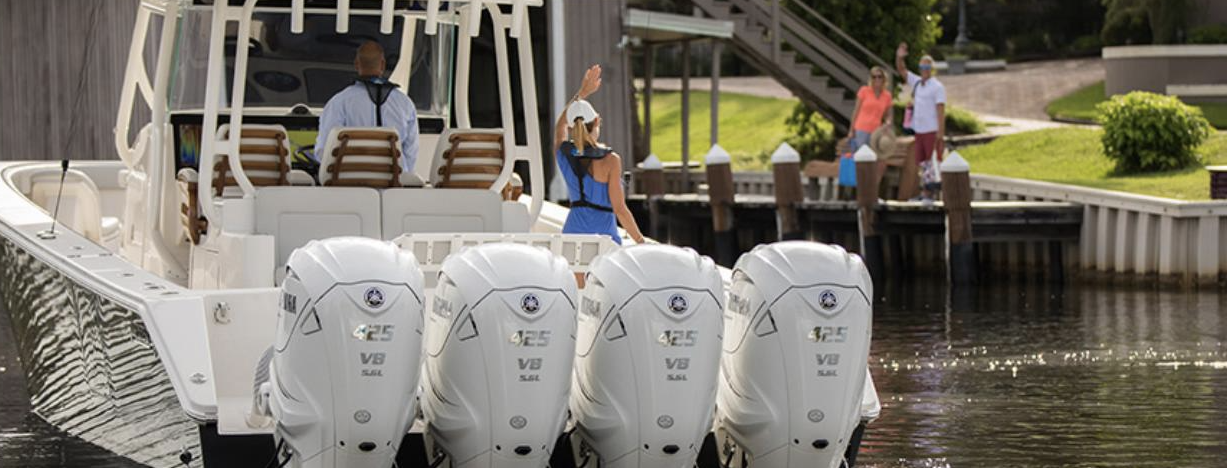
In September 2019, BoatTEST first evaluated the radical new propellers. We compared an aluminum version to two stainless-steel propellers on a 20’ (6.1 m) bowrider that weighed 3,453 lbs. (1,566.25 kg) and was powered by a 150-hp Mercury four-stroke outboard.
In short, we discovered that the Sharrow was faster at all rpm settings, planed with less rpm, had more reverse thrust, gripped the water better in turns, and had better mpg readings at nearly every speed, particularly in the midrange.
Some wondered if we just found the sweet spot for that prop in that outboard-powered bowrider.
Sharrow Props Tested on Different Type Boats
To answer those questions, Sharrow then commissioned BoatTEST to run a second evaluation of its propeller, this time on a 32’2” (9.8 m) World Cat 325 DC catamaran powered by twin 300-hp Yamaha outboards. With three people, fuel full and test gear aboard, our test model had a weight of 13,694 lbs. (6,211.49 kg).
First, we ran the boat with the propellers recommended for the application by the boat and engine manufacturers, Yamaha’s Saltwater Series II stainless-steel 15 3/4” x 15” (40.01 cm x 38.1 cm) three-blade propellers turning in the standard rotation.
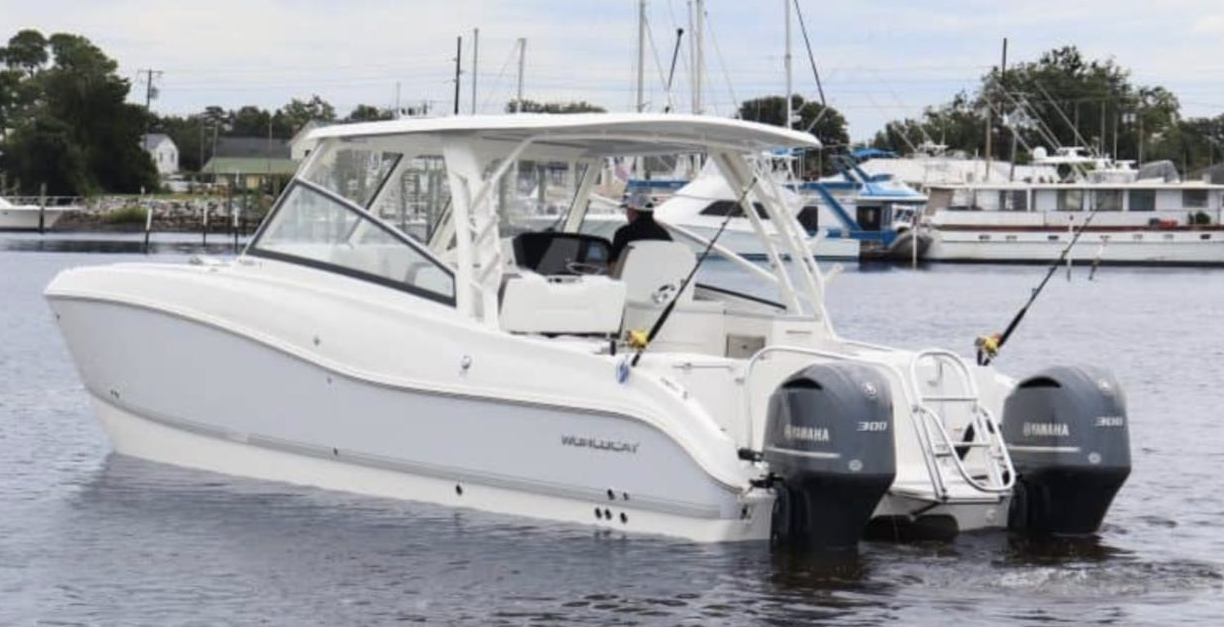
Real-World Testing
We started by focusing on best cruise, which we define as planing speed with the greatest range. For our test boat, we found the best cruise at 4000 rpm where she ran 23.8 mph and burned 21.2 gph. This translated to 1.1 mpg and a range of 282 statute miles while holding 10% of the 32 DC’s 279-gallon (1,056.13-liter) fuel capacity in reserve.
We then hauled the boat and put on 15.5” x 15.4” (39.37 cm x 39.12 cm) three-bladed Sharrow stainless-steel wheels, topped off the fuel and headed back out on the water with the same test crew. Conditions remained consistent for our second test.

With the Sharrow props, which were designed specifically for our test boat, we found the 325 DC’s best range at 3000 rpm where she ran 21.7 mph, burned 14.8 gph, and wrung 1.5 miles out of a gallon of gas. This gave her a range of 368 statute miles with the same 10% of the boat’s fuel capacity held in reserve.
Noteworthy Differences
Looking at the results, the Sharrow’s most economical rpm was 1000 revs lower than the stock propellers and the boat ran 2.1 mph slower. The biggest difference was the fuel consumption. With the conventional wheels, the boat burned 21.1 gph, but with the Sharrows, that number dropped to 14.8 gph. That translated to 1.5 mpg for the Sharrows compared to 1.1 mpg with the stock props, a 36% advantage.
Our test boat's range also increased to 368 statute miles, which is 86 miles farther than the stock setup. For anglers heading out to the canyons, that’s worth a closer look.
The propellers also work for much larger boats, we discovered.
More recently, BoatTEST evaluated a 57’ (17.37 m) catamaran, Voodoo, powered by a pair of 300-hp OXE diesel outboard engines. We ran her with custom Sharrow props and conventional 5-blade wheels made by one of America’s best outboard prop manufacturers.
This was a particularly important test because there are now two brands of diesel outboards being made for heavy-duty commercial, military, police and heavy recreational boat applications.
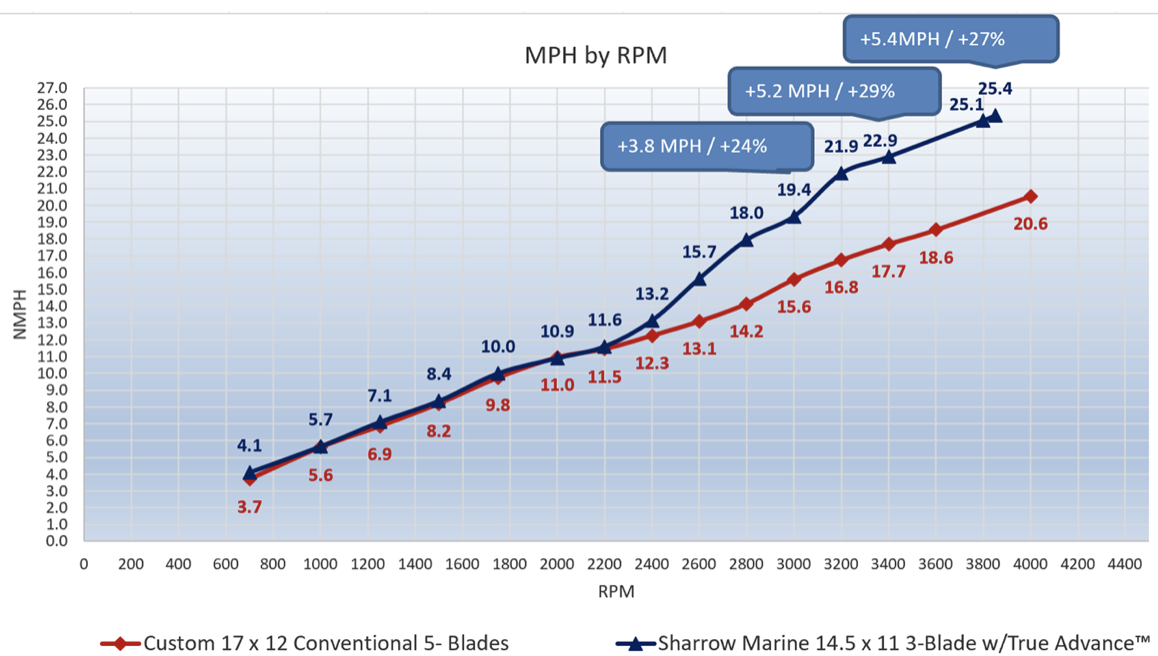
Other Diesel/Sharrow Prop Applications
A cursory look at other catamarans of about 40,000 lbs. (18,181 kgs.) powered by inboard diesels, both straight shaft and pod-driven, indicates that 300-hp diesel outboard engines equipped with Sharrow props are likely to be significantly more fuel efficient.
Many charter fleets around the world are turning to diesel-powered cats, which means they will have the same downtime threats that the owner of the boat we tested faced - and that’s why he turned to outboard diesels.
Prop Showdown Bottom Line
Virtually all gasoline outboards we have tested have ‘through-the-hub” exhaust. As a result, our test captains could never determine how much of the frothy bubbles emanating from the whirling prop was exhaust and how much was cavitation. But, because the OXE diesel does not exhaust through the prop hub, for the first time we could see the cavitation of a conventional 5-blade prop.
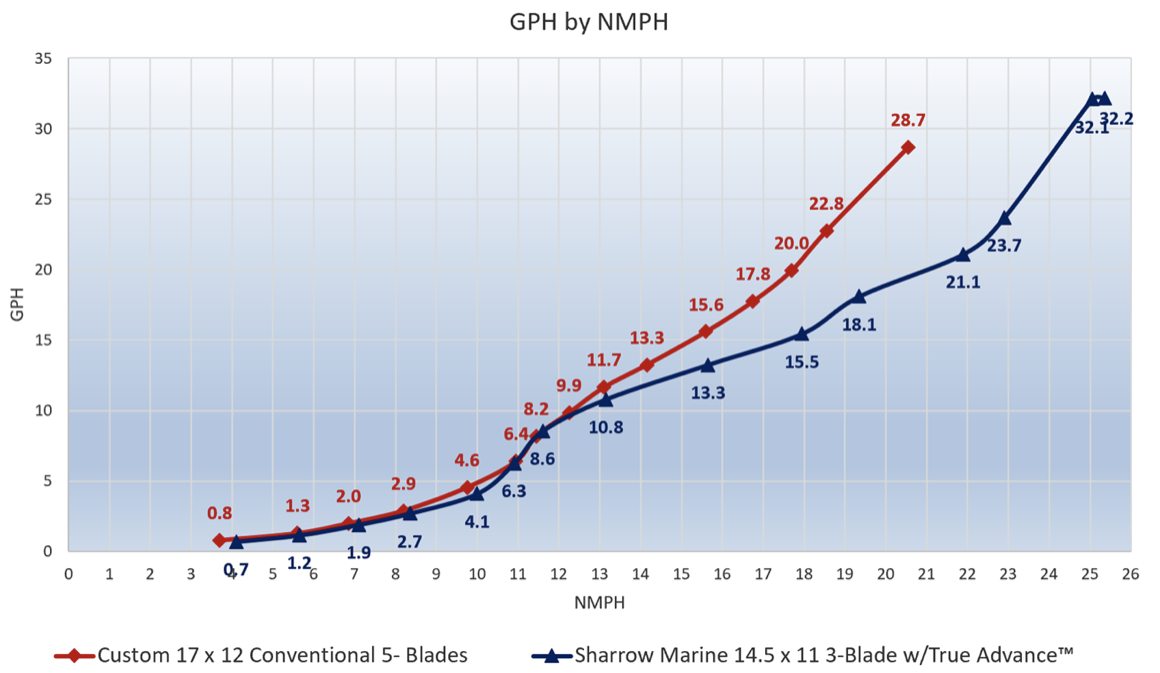
The result of the cavitation was that the advance rate of the 17” (43.18 cm) diameter x 12” (30.48 cm) pitch 5-blade conventional prop advanced only 7.40” (18.8 cm) to 8.22” (20.88 cm) with every 360-degree rotation of the prop. On the other hand the Sharrow prop advanced from a low of 7.44” (18.9 cm) to a high of 10.05” (25.53 cm) with its 14.5” (36.83 cm) x 11” (27.94 cm) 3-blade prop. See the chart below.
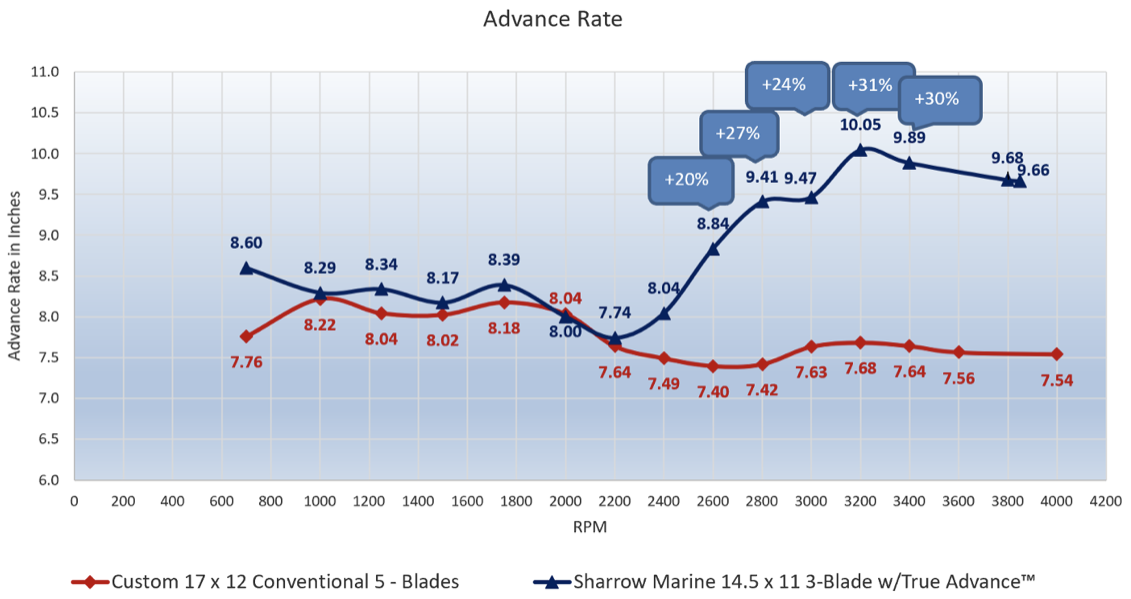
Because the boat was advancing from 20% to 30% farther with each rotation of the prop with the Sharrow prop, it was naturally the most fuel efficient of the two designs at all rpm settings except one. Studies conducted by the world governin powerboats are used 40% of the time at idle. At that speed, the Sharrow prop was 27% more fuel efficient than the traditional design.
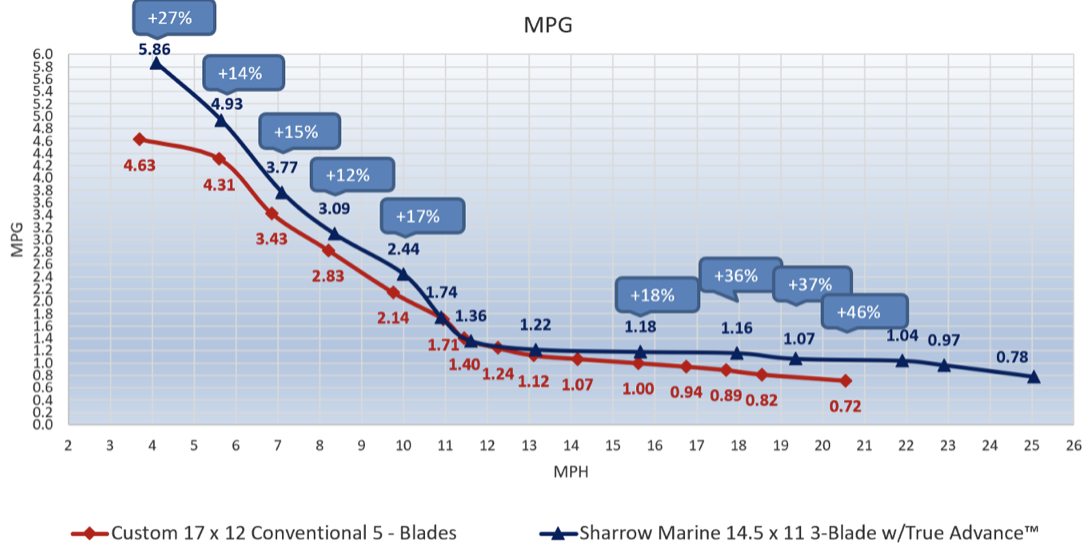
The greatest improvement in efficiency was precisely where the boat’s owner said he ran the boat most of the time — at 18 knots. For that reason, we were told, the Sharrow engineers dialed in the greatest prop efficiency at 18 knots — the 46% improvement in fuel efficiency at that speed was no fluke.
Our test of the two props was one of new technology vs. old technology. In fact, the conventional props used today are basically the same designs as the first ones that were invented in the 1830s. After nearly 200 years man has finally improved on the propeller concept.
Bottom line is that for every boat and motor combination we have tested so far, the Sharrow propellers have proven their remarkable efficiency. There are now Sharrow models suited to all available large outboards on the market. You can learn more at www.sharrowmarine.com.